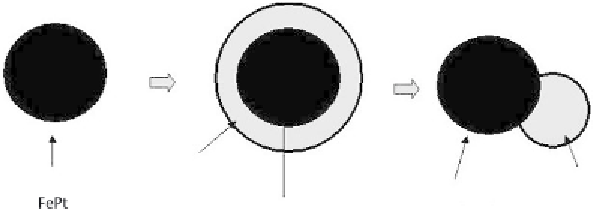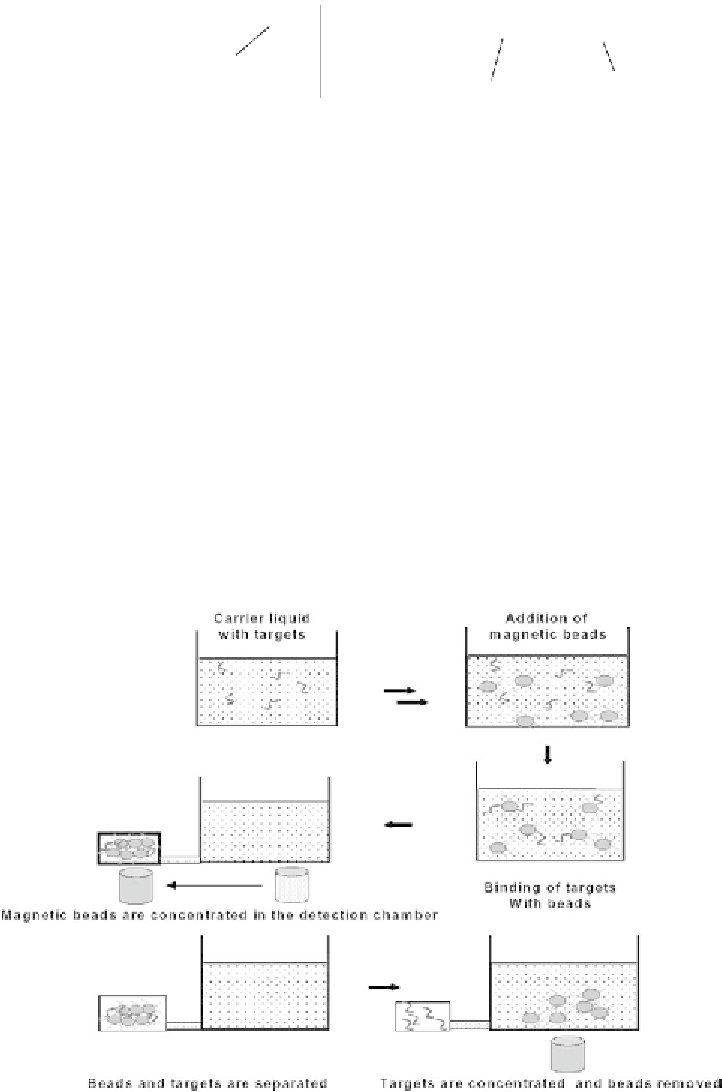Biomedical Engineering Reference
In-Depth Information
Figure 9.4
Principle of fabrication of a bifunctional magnetic/fluorescent nanoparticle.
liquid layer, because of its contact angle with the underlying solid, is not stable
and migrates to take the shape of Figure 9.4 where the liquid minimizes its surface
energy.
The drawback of this construction is that the quantic efficiency of the particle
is much less than that of a “free” quantum dot. When excited by a light source, an
important part of the emitted light is absorbed by the magnetic sphere.
9.1.3 An Example of Displacement by Magnetic Beads for Biodetection
Microsystems for biorecognition or biodiagnostic require different operating steps
schematized in Figure 9.5. Suppose a fluid volume containing some target molecules
(such as DNA, proteins, or cells). Because direct detection is not effective for few
targets in a large volume, it is necessary to concentrate the targets in a small cham-
ber (detection chamber). At this point functional magnetic beads are often used:
Figure 9.5
Principle of magnetic concentration of targets for biodiagnostics.
















